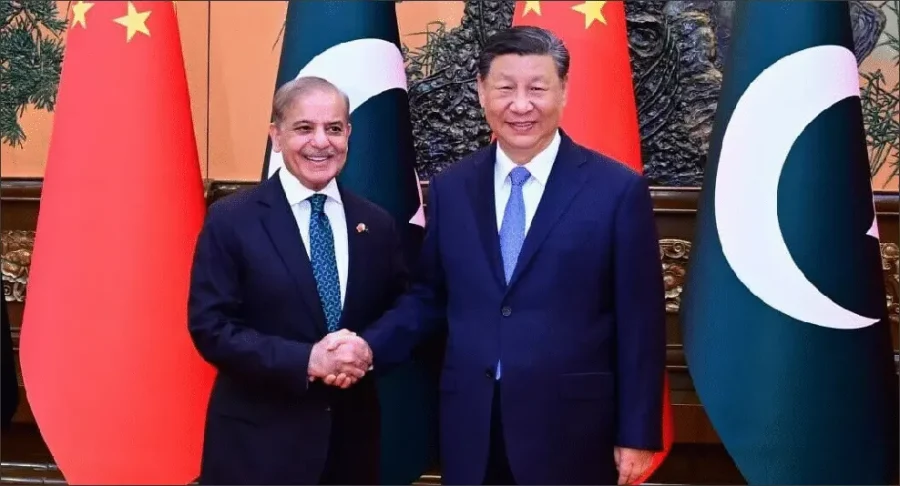In a move set to redefine the economic landscape of Pakistan and China, respectively, Prime Minister Shehbaz Sharif is spearheading the China-Pakistan Economic Corridor (CPEC), a monumental project aimed at bolstering economic cooperation and regional connectivity between the two nations. As CPEC embarks on its second phase, it is poised to unlock new avenues of growth, driving industrialization, agricultural modernization and scientific collaboration, and further solidifying the bond between the two nations. Launched in 2015 under the government of the then Prime Minister Nawaz Sharif, CPEC is the crown jewel of the Belt and Road Initiative (BRI), a visionary plan designed to strengthen ties and propel economic development.
CPEC has made remarkable strides in Pakistan, revolutionizing infrastructure with cutting-edge highways, railways and airports, slashing travel durations and igniting commercial prospects. With energy initiatives contributing 10,000 MW to the grid, power shortages are history, propelling industrial expansion. Nine dynamic special economic zones are luring international investment, birthing fresh enterprises and employment avenues. Fuelling job creation and economic upsurge, CPEC is driving Pakistan to new heights, bolstering its global standing and poised to foster further growth, alleviate poverty and solidify its role as a pivotal economic epicentre in the region.
Prime Minister Shehbaz Sharif has reaffirmed his commitment to CPEC’s success, vowing to expedite Phase 2 of the project, which focuses on industrial cooperation, agriculture and science and technology. “We are dedicated to making CPEC a resounding success, creating a new era of economic growth and prosperity for our people,” he said. With Phase 2 set to launch, Pakistan is poised for a new wave of economic transformation, solidifying its position as a key player in regional trade and commerce. Shehbaz Sharif has demonstrated unwavering commitment to CPEC’s success, recognizing CPEC’s potential to drive Pakistan’s economic growth and prosperity. Under his leadership, the government has taken decisive steps to ensure the project’s timely completion and maximum impact.
To accelerate CPEC’s progress, the government has taken a multi-faceted approach. Projects have been fast-tracked, prioritizing infrastructure development, energy generation and industrial cooperation. Additionally, institutional frameworks have been strengthened to enhance coordination and cooperation among stakeholders, ensuring a cohesive and collaborative approach. Investor-friendly policies and incentives have also been introduced to attract foreign investment and create a conducive business environment. Furthermore, the government has emphasized sustainable development and environmental protection, prioritizing eco-friendly practices and social responsibility in all CPEC projects. By taking a comprehensive approach, the government aims to ensure the successful implementation of CPEC, driving economic growth, creating jobs and improving living standards for citizens while minimizing environmental impact.
Prime Minister Shehbaz Sharif has fostered closer collaboration with China, ensuring mutual benefits and trust, and cementing Pakistan’s position as a key partner in the Belt and Road Initiative. Through these efforts, Pakistan is poised to reap the full benefits of CPEC, driving economic growth, creating jobs and improving living standards for its citizens. Building on the strategic vision of former Prime Minister Nawaz Sharif, who initiated CPEC, Prime Minister Shehbaz Sharif is spearheading its implementation with remarkable effectiveness. Even during his tenure as the Chief Minister of Punjab, he actively promoted CPEC projects, ensuring their timely execution and development. Under his supervision, significant infrastructural advancements, such as the fully operational Orange Line Metro Train in Lahore, have substantially improved urban mobility. Shehbaz Sharif has prioritized energy projects within CPEC, exemplified by the early completion of the Sahiwal Coal Power Project, which provides 1,320 MW of electricity and has significantly reduced load shedding in the region. His strategic vision and administrative excellence have also facilitated the establishment of Special Economic Zones (SEZs) to attract Chinese investment. A notable example is the Allama Iqbal Industrial City in Faisalabad, which has created thousands of jobs and boosted industrial productivity.
Despite challenges posed by India’s stance on CPEC’s route through the disputed Kashmir region, Shehbaz Sharif remains optimistic about the commencement of CPEC’s second phase. Phase-I which focused on energy and infrastructure projects, has been successfully completed. The forthcoming phase will address agricultural projects, Main Line-1 of Pakistan Railways, business-to-business deals, and the realignment of the Karakoram Highway. The economic impact of CPEC projects under Shehbaz Sharif’s leadership has been significant. Infrastructure advancements, such as the Multan-Sukkur Motorway, have enhanced mobility, reduced travel time, and lowered costs for businesses, commuters, and tourists alike. Since the inception of CPEC projects in Pakistan, they have served as a catalyst for job creation, driving economic growth and benefiting thousands of Pakistanis. CPEC is a game changer for Pakistan’s economic future. The project has already demonstrated its potential to transform the country’s economy, and its continued growth and expansion are expected to have a lasting impact on Pakistan’s development.
Prime Minister Shehbaz Sharif’s concerted efforts and focus on CPEC in 2024 have injected new energy into the project, ensuring its success and cementing Pakistan’s position as a key player in regional economic affairs. As CPEC moves forward, it is essential to maintain this momentum, ensuring transparency, accountability, and environmental sustainability, and maximizing the benefits for the people of Pakistan and the region.
—The Writer is a Member of the National Assembly of Pakistan.










